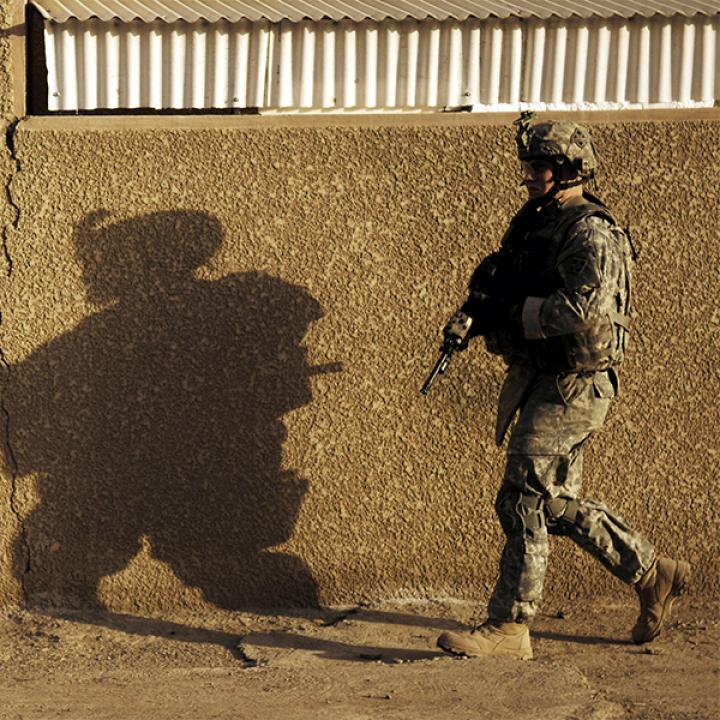
- Policy Analysis
- Fikra Forum
Regional Implications of a U.S. Pullout from Afghanistan

President Donald Trump has said he plans to withdraw all U.S. troops (about 12,000) from Afghanistan by 2021 and that the United States should never have gotten involved there in the first place. Moreover, another 7,000 military forces from European countries would almost certainly leave if the United States did. (Turkey, Jordan and the United Arab Emirate also have had forces in Afghanistan in the past.) Trump’s views echo a general disenchantment by much of the American public about U.S. engagement in Afghanistan. No one likes wars that have a beginning but no end.
Virtually all observers of Afghanistan believe that a total international withdrawal of military personnel would result in an Afghan civil war whose violence would be even worse than the current level. About 60,000 full-time Taliban fighters, various militia groups, and remnants of the Afghan National Army would jockey for power locally and for control of Kabul.
Moreover, the current Afghan government might also collapse and would almost certainly do so if the international community also withdrew its current financial support or found it too difficult to distribute. Significantly, the former Soviet-backed Afghan government survived the Soviet military withdrawal in 1989, but collapsed in 1992 when Moscow ended its financial support.
In the resulting civil war, the major fault line would be between the Pashtun dominated Taliban and the so-called Northern Alliance composed mainly of Tajiks, who speak a variant of Persian, in the west and north, Uzbeks in the north, and Hazaras, who are Shia and therefore have ties to Iran, in central Afghanistan. The Northern Alliance, a loose grouping of political forces rather than a cohesive organization, represent around 60 percent of the population; Pashtuns, traditionally the country’s dominant ethnic group, represent about 40 percent.
While most of the Taliban and other contending forces would focus on controlling Afghanistan, a certain number of terrorist groups, based currently in Afghanistan, but dedicated to attacking Western and Islamic governments and civilians outside of Afghanistan would be emboldened. This includes the Islamic State branch in Afghanistan and the remnants of Al-Qaeda in Afghanistan and Pakistan. According to a UN Security Council report, relations between the Taliban, especially its Haqqani network, and al-Qaeda “remain close, based on friendship, a history of shared struggle, ideological sympathy, and inter-marriage.”
The international withdrawal would provide these groups with a narrative about a successful jihad, resulting in more recruits. A similar narrative took root in the wake of the Soviet withdrawal in 1989: Jihadis said, with considerable justification, that they had defeated a super-power (without acknowledging the considerable assistance they received from the United States and Europe.)
Terrorists currently living elsewhere in the Islamic world and in the West would also probably be energized. Some might gravitate towards ungoverned spaces in Afghanistan, the Islamic State branch in Afghanistan (the Islamic State in Khorasan) or to areas under Taliban control for training and indoctrination. In the late 1990s, Osama Bin Laden left Sudan to establish training camps in southern Afghanistan under Taliban rule.
Moreover, terrorist groups in Afghanistan and elsewhere would also certainly benefit from the scattering of the inventory of the Afghan National Army and Air Force, which includes some fairly advanced weapons. These arms would flood into the international black market for arms.
With the withdrawal of the international coalition, there would also likely be a geopolitical free-for-all in Afghanistan with outside powers seeking to increase their influence. As in the 1990s, Iran would probably favor the Tajiks and Hazara, Turkey the Uzbeks, and Russia, India, other Central Asian Republics and perhaps even the United States might back all of the Northern Alliance parties.
Conversely, Pakistan, and perhaps Saudi Arabia and the United Arab Emirates, would attempt to extend their influence in Afghanistan through the Afghan Pashtuns, including the Taliban. These three countries were the only ones that recognized the Taliban’s legitimacy after they took power in 1996.
Whether Islamabad would support the Taliban as aggressively as it did in the 1990s, when it sent military officers to help them take more than 90 percent of the country, is an open question. Since Pakistan today has its own Taliban opposition group, unlike in the 1990s, some experts on Afghanistan believe Islamabad would be more measured in its support for the Afghan Taliban, preferring a weak coalition of various forces in Kabul.
In any case, an extended civil war and/or the collapse of the Afghan central government would exacerbate international rivalries, including among Iran, Saudi Arabia, and Turkey.
Conclusion
As bad as things are currently in Afghanistan, violence would get worse in the wake of a total withdrawal of the international coalition. Moreover, Afghanistan over the last two decades has made considerable progress in economic growth in urban areas, social advancement in education, in the status of women, and even in political development, however contested its national elections. If you are looking for a tribute to human endurance, look at today’s Afghans.
The withdrawal of the international coalition would end all this and would represent a setback in other regions of the Islamic world as well.
Comment by Anwar Eshki: “The withdrawal of the United States from Afghanistan will ignite civil war in the country and end up with the Taliban taking over. When the situation is better, the world will deal with Taliban as a state rather than a militia and Taliban will change, as it becomes a political entity. If Taliban does not change its policies, the Afghani people will force it to change. As with Russia, it will be impossible to intervene in Afghanistan at this point as it will drain its resources”.


